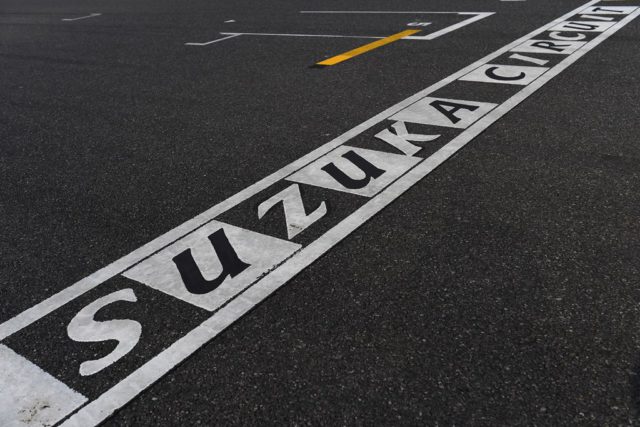Suzuka is one of the legendary circuits in Formula 1, famed for its frequent fast, sweeping corners. The S bends in sector one, and the flat-out 130R in sector three are standouts around the 5.807km circuit which hosted its first Grand Prix in 1987. 53 laps on race day will be a tough, physical test for the drivers with the often unpredictable weather sure to throw up some surprises. But all of that also makes the Japanese Grand prix one of the drivers’ and fans’ favourites on the F1 calendar.
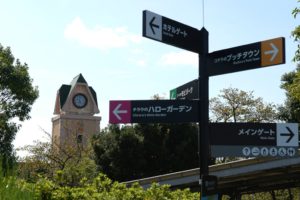 Power Unit Notes
Power Unit Notes
Suzuka is one of the toughest circuits of the year for the ICE. The sustained bursts of throttle test the internals’ strength, while the heavy braking events challenge reactivity and reliability.
Over 65% of the lap is taken at full throttle, but the majority of this comes in the second half of the track from the exit of the Spoon corner (Turn 14) to the chicane on the entry of the pit straight. This includes a pass through the 130R, where the speed is over 300kph despite being a flowing left-hand bend.
Over 65% of the lap is taken at full throttle
But the majority of this comes in the second half of the track from the exit of the Spoon corner (Turn 14) to the chicane on the entry of the pit straight. This includes a pass through the 130R, where the speed is over 300kph despite being a flowing left-hand bend.
With a top speed peaking at almost 330kph, Suzuka gives rise to one of the highest speed seen in the second part of the year. Inside the ICE the pistons will turn at an incredible 200 times per second, generating enormous internal forces.
With a top speed peaking at almost 330kph, Suzuka gives rise to one of the highest speed seen in the second part of the year. Inside the ICE the pistons will turn at an incredible 200 times per second, generating enormous internal forces.
The second slowest corner is the chicane, which is taken at approximately 80kph. This is the best chance to recover energy through the MGU-K as the cars approach at well over 310kph. Braking down to under 100kph generates huge amounts of heat and energy in the brakes. At this point, there is even excess energy that engineers are not allowed to recover as a result of the regulations.
#JAPANESEGP ?? MOST WINS (Current drivers)
4 VET (? 2013)
3 HAM
2 ALO
1 RAI#F1FastFact #F1 pic.twitter.com/QfT5v1eHNl— Formula 1 (@F1) October 3, 2017
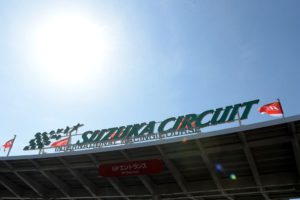 In Numbers
In Numbers
6,852 – Japan is made up of 6,852 islands
17 – Japan consumes around 17m tons of fish every year
18 – Trains in Japan are one of the most punctual in the world with average delays of 18 seconds.
 2017 Formula 1 Japanese Grand Prix
2017 Formula 1 Japanese Grand Prix
Circuit name Suzuka International Racing Course
First race 1987
Previous winners
2016 Nico Rosberg, 53 laps, 1:26:43.333s
2015 Lewis Hamilton
2014 Lewis Hamilton
History lesson Suzuka was built by the Honda Motor Company in 1962. Its innovative figure-of-eight design was the brainchild of Dutchman John Hugenholtz and the layout has changed little over the years. The biggest alterations came in the early ’80s, when a chicane was added at the end of the lap and the Degner curve was made into two separate corners. This year’s race is the 29th Japanese Grand Prix at the track
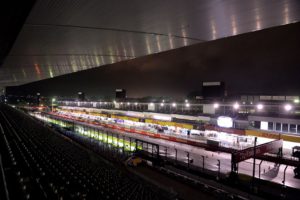 Travel
Travel
City Suzuka
Time zone BST+8/CET+7
Population 200,000
Getting there With the Japanese Grand Prix taking place a week after Malaysia, time is of the essence. Teams are catching charter flights from Kuala Lumpur to Nagoya on the Monday between the two races; they will then travel from Nagoya to the hotel in Suzuka by coach
Surprising fact More than 70 percent of Japan is mountainous. The landscape includes more than 200 volcanoes, the highest of which is Mount Fuji (3,776 metres). Situated at the base of Mt Fuji is Fuji Speedway, which staged the Japanese Grand Prix in 1976/’77 and 2007/’08
Local speciality Japan has more Michelin-starred restaurants than France, so it will come as no surprise that there are many culinary delights awaiting fans. Traditional Japanese cuisine is based around rice with miso soup; to make miso, all you need is some tofu, soy sauce, miso paste and spring onions
Weather Average daytime temperatures in October are 21 degrees and there’s a 35 percent chance of rain. Humidity is relatively high, making this a tough physical challenge for the drivers
 Track
Track
Track length 5.807km/3.608 miles (5th longest track of the year – longest: Spa-Francorchamps, shortest: Monaco)
2016 pole position Nico Rosberg, 1m30.647s
2016 fastest lap Sebastian Vettel 1m35.118s (lap 36)
Lap record 1:31.540s (Kimi Raikkonen, 2005)
Tyre choice Red Supersoft, yellow Soft and white Medium compounds – the eighth time this combination has been used in 2017
Distance to Turn One 350m/0.217 miles (longest of season: Barcelona 730m/0.454 miles)
Longest straight 900m/0.559 miles, on the approach to Turn 16 (longest of the season: Baku, 2.1km/1.305 miles)
Top speed 320km/h/199mph, on the approach to Turn 16 (fastest of season: Monza, 360km/h/224mph)
Full throttle 65 percent (highest of the season: Monza, 75 percent). The longest period of full throttle is 16s, on the approach to Turn 16
Brakewear Low. Only 10 percent of the lap is under braking
Fuel consumption 1.8kg per lap, which is average
ERS demands Medium. With only one heavy braking zone, into Turn 16, it’s a challenge to harvest enough braking energy around the lap
Gear changes 42 per lap/2,226 per race
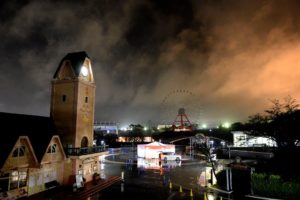 Race
Race
Laps 53 laps
Start time 14:00hrs local/06:00hrs BST/07:00hrs CET
Grid advantage Pole position is on the outside of the grid, on the racing line. There is more grip available there, but it’s a downhill start and drivers can win and lose a lot on how they release the brake pedal
DRS There is one DRS zone, on the approach to Turn One
Don’t put the kettle on… Two pitstops, on or about laps 15 and 35, has been the winning dry-weather strategy for the last few years. But Pirelli has gone one step softer with their compound choices this year and that could force drivers to make an extra stop
Pitlane length/Pitstops 413m/0.257 miles (longest of the season: Silverstone, 457m/0.284 miles). It takes 20s to make a stop
Safety Car likelihood 60 percent. The track is narrow, the barriers are close and accidents usually take place at high speed, resulting in a lot of debris
Watch out for… The fans, who are passionate and knowledgeable. If it rains heavily, the track’s undulations produce rivers and aquaplaning is a real danger
#JAPANESEGP ?? MOST WINS (Current teams)
9 McLaren (? Hunt 1977 ?)
7 Ferrari
4 Red Bull
3 Williams, Mercedes
2 Renault #F1FastFact #F1 pic.twitter.com/sI4iMbosEm— Formula 1 (@F1) October 3, 2017






















